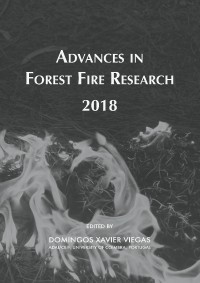Please use this identifier to cite or link to this item:
https://hdl.handle.net/10316.2/44600| DC Field | Value | Language |
|---|---|---|
| dc.contributor.author | Arena, Alessio | |
| dc.contributor.author | Leonard, Justin | |
| dc.contributor.author | Blanchi, Raphaele | |
| dc.contributor.author | Newnham, Glenn | |
| dc.contributor.author | Opie, Kimberley | |
| dc.date.accessioned | 2018-11-09T14:57:01Z | |
| dc.date.accessioned | 2020-09-06T17:31:38Z | - |
| dc.date.available | 2018-11-09T14:57:01Z | |
| dc.date.available | 2020-09-06T17:31:38Z | - |
| dc.date.issued | 2018 | - |
| dc.identifier.isbn | 978-989-26-16-506 (PDF) | |
| dc.identifier.uri | https://hdl.handle.net/10316.2/44600 | - |
| dc.description.abstract | This paper describes a new tool developed to spatially quantify the radiant heat flux generated during a wildfire. Radiant heat generated by a wildfire can reach levels that are threatening for building structures and deadly for human life. Very dangerous situations can occur when fire shelters fail and people are required to change location. In Australia, radiant heat flux estimation has been used to model the potential exposure experienced by structures, and forms the basis for wildfire related building and planning regulations. The existing radiant heat estimation method was developed for on-site assessment, and tends to be simplistic and not scalable at a regional level. This can result in suboptimal design outcomes for builders and planners when implementing their fire risk management strategies. This paper describes a new spatial tool developed to better quantify maximum radiant heat flux at a local to regional scale. This tool builds on the estimation method already in use within the Australian legislation, improving its efficiency and expanding its spatial capabilities. The result is a comprehensive radiant heat map that can improve our understanding of conditions during wildfire as a means of understanding mechanisms for human impacts and structure loss. | eng |
| dc.language.iso | eng | - |
| dc.publisher | Imprensa da Universidade de Coimbra | por |
| dc.relation.ispartof | http://hdl.handle.net/10316.2/44517 | por |
| dc.rights | open access | - |
| dc.subject | radiant heat flux | eng |
| dc.subject | spatial | eng |
| dc.subject | GIS | eng |
| dc.subject | fire | eng |
| dc.subject | risk | eng |
| dc.title | Development of a spatial analysis tool for radiant heat flux predictions | por |
| dc.type | bookPart | por |
| uc.publication.firstPage | 761 | - |
| uc.publication.lastPage | 768 | - |
| uc.publication.location | Coimbra | por |
| dc.identifier.doi | 10.14195/978-989-26-16-506_83 | - |
| uc.publication.section | Chapter 4 - Fire at the Wildland Urban Interface | por |
| uc.publication.digCollection | PB | por |
| uc.publication.orderno | 83 | - |
| uc.publication.area | Ciências da Engenharia e Tecnologias | por |
| uc.publication.bookTitle | Advances in forest fire research 2018 | - |
| uc.publication.manifest | https://dl.uc.pt/json/iiif/10316.2/44600/204291/manifest?manifest=/json/iiif/10316.2/44600/204291/manifest | - |
| uc.publication.thumbnail | https://dl.uc.pt/retrieve/11059547 | - |
| uc.publication.parentItemId | 55072 | - |
| uc.itemId | 68867 | - |
| item.grantfulltext | open | - |
| item.fulltext | With Fulltext | - |
| Appears in Collections: | Advances in forest fire research 2018 | |
Files in This Item:
| File | Description | Size | Format | |
|---|---|---|---|---|
| development_of_a_spatial_analysis_tool.pdf | 902.31 kB | Adobe PDF |  |
Items in DSpace are protected by copyright, with all rights reserved, unless otherwise indicated.
